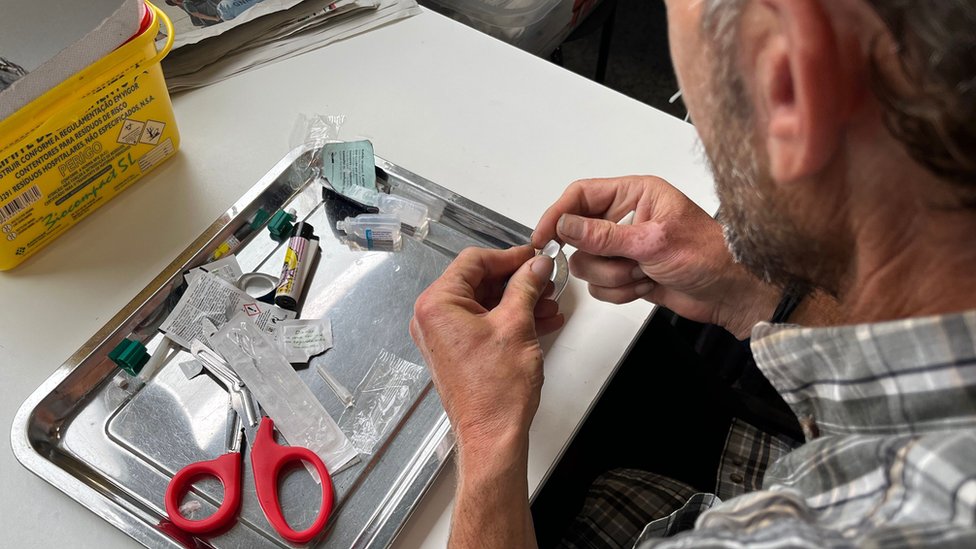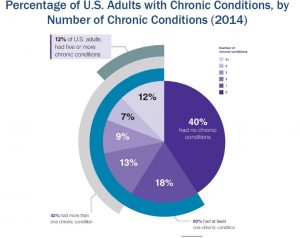Report on Sacred Journey Recovery’s Contribution to Sustainable Development Goals
A specialized men’s drug rehabilitation program in Vista, California, is addressing the national public health crisis of addiction through a comprehensive model that aligns with several United Nations Sustainable Development Goals (SDGs). The initiative by Sacred Journey Recovery provides holistic, trauma-informed care that contributes directly to community health, gender-specific well-being, and economic stability.
Advancing SDG 3: Good Health and Well-being
The core mission of the rehabilitation program is in direct support of SDG 3, which aims to ensure healthy lives and promote well-being for all. The center’s work specifically targets SDG Target 3.5: “Strengthen the prevention and treatment of substance abuse, including narcotic drug abuse and harmful use of alcohol.”
- Dual-Diagnosis Treatment: By addressing co-occurring mental health disorders such as depression, anxiety, and PTSD alongside substance use, the program supports SDG Target 3.4, which seeks to promote mental health and well-being.
- Evidence-Based Therapies: A personalized care plan is developed for each client, utilizing a combination of clinical interventions to break physical dependency and address underlying psychological challenges.
- Holistic Healing: The integration of mindfulness, physical fitness, and adventure therapy promotes a comprehensive vision of health that encompasses mental, physical, and emotional well-being.
Addressing SDG 5: Gender Equality
The program’s gender-specific design for men acknowledges the unique societal pressures and barriers that can hinder their path to recovery. This tailored approach aligns with the principles of SDG 5 by recognizing and addressing gender-specific needs to ensure equitable access to effective healthcare.
- The facility provides a secure and structured environment where men can address emotional vulnerability and dismantle behavioral patterns associated with addiction, which may differ from those experienced by other genders.
Supporting Economic and Community-Focused Goals (SDG 8 & SDG 11)
The program’s continuum of care model is designed to facilitate successful reintegration into society, contributing to SDG 8 (Decent Work and Economic Growth) and SDG 11 (Sustainable Cities and Communities).
Therapeutic and Reintegration Services
- Clinical Therapies:
- Cognitive Behavioral Therapy (CBT)
- Dialectical Behavior Therapy (DBT)
- Group and Individual Counseling
- Continuum of Care:
- Aftercare Support Programs
- Sober Living Referrals
- Vocational Development Opportunities
- Alumni Support Networks
By providing vocational development and support for re-entering the workforce, the program empowers individuals to achieve productive employment, a key component of SDG 8. This focus on long-term stability helps reduce relapse and fosters resilient individuals who can contribute positively to their local economies and communities, reinforcing the objective of SDG 11 to create inclusive, safe, and sustainable human settlements.
Analysis of Sustainable Development Goals (SDGs) in the Article
-
Which SDGs are addressed or connected to the issues highlighted in the article?
The article primarily addresses issues related to the following Sustainable Development Goal:
- SDG 3: Good Health and Well-being: This is the central SDG discussed. The article focuses on the public health crisis of drug and alcohol addiction, the need for treatment, and the promotion of mental health. It details the services of a rehabilitation center aimed at helping individuals overcome substance use disorders, which directly contributes to ensuring healthy lives and promoting well-being for all at all ages.
-
What specific targets under those SDGs can be identified based on the article’s content?
Based on the focus on substance abuse and mental health, the following specific targets under SDG 3 are identified:
- Target 3.5: Strengthen the prevention and treatment of substance abuse, including narcotic drug abuse and harmful use of alcohol. The entire article is about the Sacred Journey Recovery program, which is designed to provide “holistic, trauma-informed care to individuals battling substance use disorders.” It explicitly mentions its “men’s drug rehab program” and “men’s alcohol rehab program,” directly aligning with the goal of strengthening treatment for substance abuse.
- Target 3.4: By 2030, reduce by one third premature mortality from non-communicable diseases through prevention and treatment and promote mental health and well-being. The article highlights the connection between substance abuse and premature death, noting that “national overdose rates remaining high” and a local “spike in… overdose deaths.” Furthermore, it emphasizes the importance of mental health by addressing “co-occurring mental health disorders” and “untreated depression, anxiety, PTSD,” which is a key component of promoting well-being and preventing mortality.
-
Are there any indicators mentioned or implied in the article that can be used to measure progress towards the identified targets?
Yes, the article mentions and implies several indicators that can be used to measure progress:
- Indicator for Target 3.5 (Indicator 3.5.1: Coverage of treatment interventions for substance use disorders): The article describes the existence and services of the Sacred Journey Recovery center as a direct response to the need for treatment. The program’s offerings, such as “Cognitive Behavioral Therapy (CBT), Dialectical Behavior Therapy (DBT), group therapy, individual counseling,” and “aftercare support,” represent the coverage of treatment interventions available to the community.
- Indicator for Target 3.4 (Mortality rate from substance abuse): The article explicitly points to “national overdose rates” and a local “spike in… overdose deaths” as critical problems. These statistics serve as direct indicators for measuring the mortality associated with substance abuse, and a reduction in these rates would signify progress toward Target 3.4.
- Indicator for Target 3.4 (Prevalence of mental health disorders): The article implies this indicator by stating that “Many men entering treatment have untreated depression, anxiety, PTSD, or other mental health disorders.” The program’s “dual-diagnosis approach” to treat these concurrent issues suggests that the prevalence and treatment of co-occurring mental health disorders is a key metric for successful recovery and well-being.
Summary of Findings
| SDGs | Targets | Indicators |
|---|---|---|
| SDG 3: Good Health and Well-being | 3.5: Strengthen the prevention and treatment of substance abuse, including narcotic drug abuse and harmful use of alcohol. |
|
| SDG 3: Good Health and Well-being | 3.4: Reduce premature mortality from non-communicable diseases through prevention and treatment and promote mental health and well-being. |
|
Source: finance.yahoo.com







